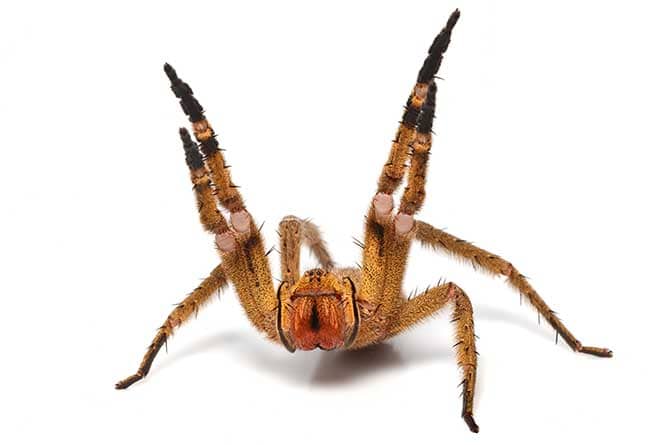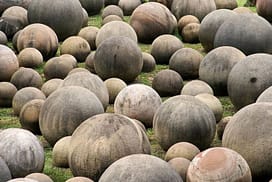Brazilian Wandering Spider

LIKE ALTER MINDS ON FACEBOOK:
Is the Brazilian Wandering Spider
the most lethal spider on our planet ?
Phoneutria, commonly known as Brazilian drifting spiders, armed spiders (armadeiras, as they are known in Brazilian Portuguese), or banana spiders, are a genus of severe and venomous spiders of potential medical significance to humans. They are mainly found in tropical South America, as soon as one species in Central America. These spiders are members of the Ctenidae associates of aimless spiders.
The Brazilian pointless spiders undertaking Guinness World Records from 2010 as the worlds most venomous spider. Guinness World Records states that although the Brazilian aimless spider venom is the most toxic, an in force antivenom is comprehensible and few fatalities occur.
Where do Brazilian wandering spiders come from?
Fortunately, it is very rare to find Brazilian wandering spider in the UK or anywhere outside their natural habitat in South America.
They live in the forests of Costa Rica, Columbia, Peru, Brazil, and Paraguay and gain their name from the habit of moving across jungle floors at night in search of food.
In the day, they like hiding in places that are dark and moist and are known to favour piles of wood, garages, cupboards, shoes and even heaps of clothes.
The apparent tendency to hide in banana bunches – like in the latest incident – has given them the nickname “banana spider”.
Their scientific name translates as “murderess” in Greek and they are also known as the “armed spider”, because of their unusual attacking stance, and “horse stinger”.
How deadly is this breed?
The Guinness Book of World Records has named it the most venomous spider in the world for possessing the most active neurotoxic venom of any living spider.
The toxin PhTx3 causes extreme pain, swelling, paralysis, skin cell destruction, fatal breathing complications, heart attacks and painful erections (priapism) in men lasting up to four-hours.
Victims of a Brazilian wandering spider bite can reportedly be killed in an hour.
But few deaths occur because an effective anti-venom is available in Brazil and Guinness claims that people are killed, it is usually in children under the age of seven.
Scientists have reportedly considered investigating the use of the deadly venom as a possible ingredient for drugs treating erectile dysfunction.
What do Brazilian wandering spider look like?
There are eight known species, with the most dangerous being the Phoneutria fera and the Phoneutria nigriventer.
All vary slightly in appearance but are known for their size, with a leg span of up to 15 cm (6 ins) and body length of up to 5 cm (2 ins).
They are covered with hair and usually dark brown in colour, with some displaying bright red hairs on their venom glands.
When Brazilian wandering spider feel threatened, they adopt a distinctive “attacking” stance with their front legs in the air, swaying from side to side.
How do they attack?
The spiders use bites as their main form of attack but do not always deliver venom, using it only in an estimated third of bites.
They eat insects and small mammals, including other spiders, amphibians, reptiles and mice, hunting them on the ground and killing with an ambush or direct attack.




